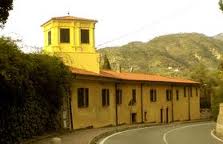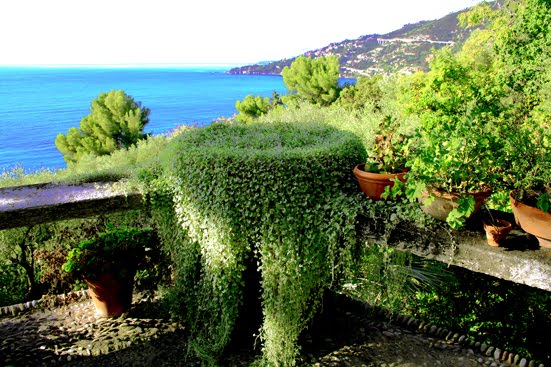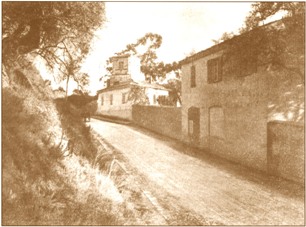
Villa Piacenza Boccanegra Garden
This post is also available in:
 Italiano (Italian)
Italiano (Italian)
In the southernmost part of Liguria, a few kilometres from the French border, Boccanegra Garden offers an excellent collection of Mediterranean climate plants coming from all over the world. They are neatly arranged over some 10 acres of terraced cultivation gently sloping to the sea.
HISTORY
The first traces of the estate date back to 1554, although the different owners have mostly contributed to its current appearance only for the last two centuries. For instance, MP Giuseppe Biancheri bought it from the Genoese marquises de Mari, in 1865. Working with his close friend Thomas Hanbury and his garden manager, Ludovic Winter, Biancheri introduced many types of roses, including the Lady Banks’ variety (Rosa banksiae) which can still be seen
on the fencing wall from via Aurelia.
Between 1906 and 1923, Ellen Willmott, a wealthy English heiress and landscape architect, built two water reserves, paths and walkways; she planted exotic species of all kinds, date palms and a row of eucalyptus trees.
In the second half of the 1950s, Mario Sertorio, an entrepreneur from Piedmont, built a second terraced-belvedere, after the original one overlooking the garden and the sea. He then added the “opus incertum” pavement (an ancient Roman construction technique, using irregularly shaped and randomly placed uncut stones or fist-sized tuff blocks) in front of the house, the stone path, and the greenhouse near the orchard; he also improved the flower and plant decorations of the house.
Later one, the estate was inherited by the Piacenza family – the one who had already built the famous Burcina park on the hill behind the factory, in Biella – today is a special nature reserve of Piedmont.
Finally, experienced botanists Guido Piacenza and Ursula Salghetti Drioli bought the property in 1983.
THE RESTORATION
The current owners have worked on a major restoration since 1983. In particular, they have removed the spontaneous Mediterranean plants which had taken the “noble” vegetation over. By doing that, they have managed to restore the garden to its original appearance by Ellen Wilmott – they’ve also uncovered some valuable, exotic species. Many new ones have also been added, motly from Australia, South Africa, Chile and California. Their original seeds have been planted and painstakingly taken care of, in order to adjust the hot, dry soil in the summer and the shallow, sloping ground. Reducing the number of tree species, the current owners have focused on perennial herbaceous ones and Mediterranean bulbs. Different microclimates are, in fact, present in the garden: there’s a Mediterranean wood of holm oaks, cypresses, Aleppo pines, ashes and evergreen shrubs (Phillyrea); a dry, rocky patch of succulent plants, lavenders, rosemary and pincushions; two olive groves; a vegetable garden and an orchard.
The steep terrain on the sea has been reserved to the spontaneous flora, while the area near the house is full of “thirsty” tropical plants – which require particular care – and the only one equipped with an irrigation system. Boccanegra is, in fact, a natural garden, which can grow mostly unattended.
FLORA
Plant species include: Agathis robusta, Encephalartos spp., Peumus boldus, Quercus ilex, Pinus halepensis, Pinus sabiniana, Pittosporum tobira, Chamaerops humilis, Cotoneaster pannosus, mastic trees (Pistacia lentiscus), and Rhamnus alaternus.
Then there are Jasminum heterophyllum, Senecio angulatus and Senecio deltoides, (both from South Africa), as well as Smilax aspera.
Dry-climate herbs are represented by Aberia caffra, ragworts, Polygala myrtifolia.
Mediterranean bulbs include a collection of some 50 species of Aloe vera, Agave, Loxostylis alata, and Eriocephalus africanus. Roses which grow in warm climates are present as well, like Lady Bank’s, Rosa laevigata, Chinese and Indian hybrids, as well as the rare “Sénateur Lafollette”, created in 1920.
This post is also available in:
 Italiano (Italian)
Italiano (Italian)
Contatti
Via A. Toscanini 49 - Ventimiglia(IM)
0184 229447
direzione@piacenza1733.it
Altre info
7 euro a persona; visite per gruppi su prenotazione






